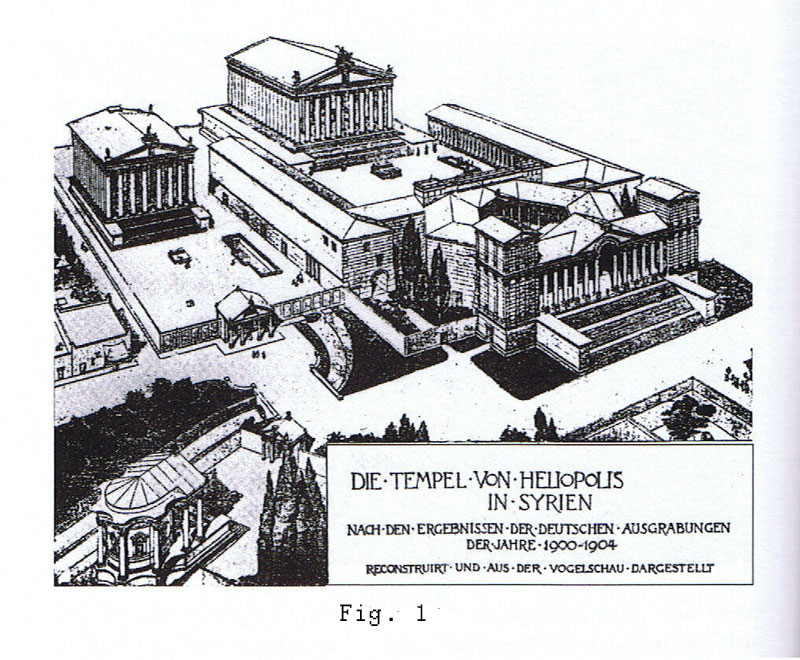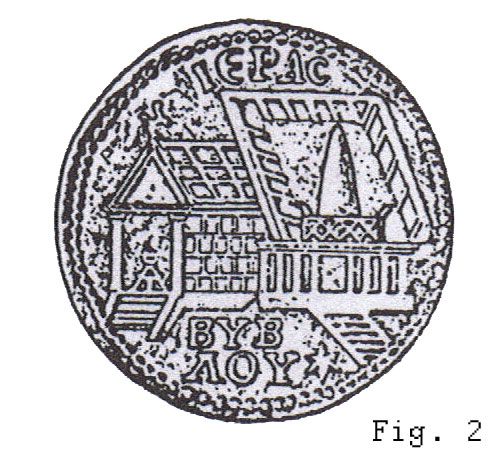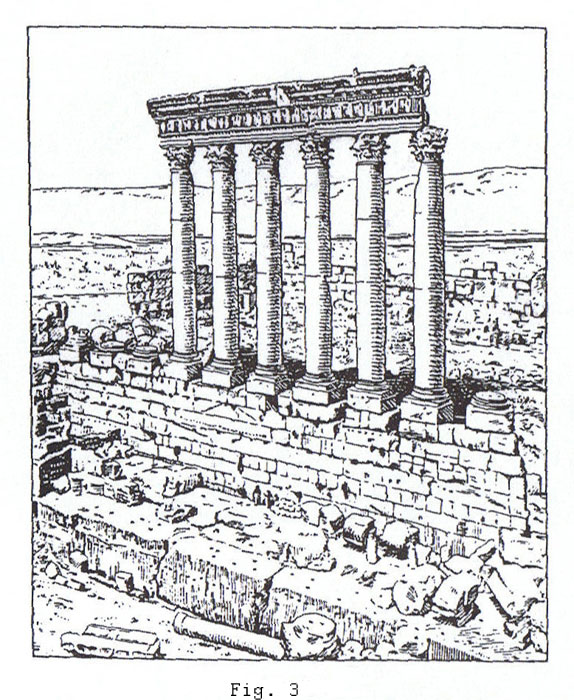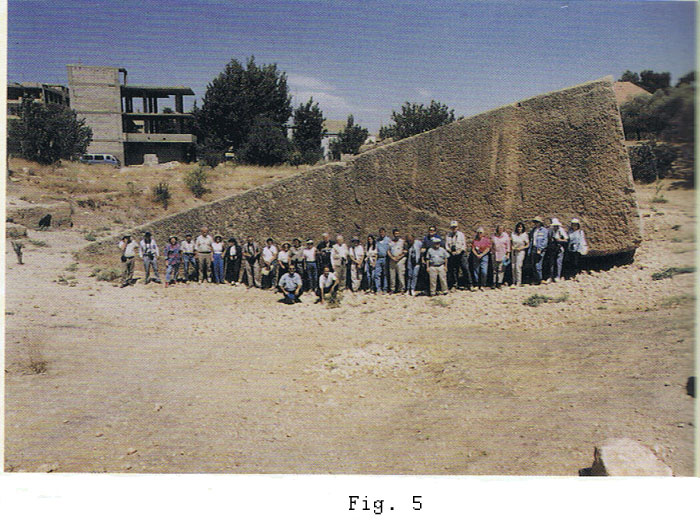Bakkah (tempat Rumah pertama) itu Ba'albek?
From: msahib56
To: Pengurus Laman <ebacaan@yahoo.com>
Sent: Saturday, June 11, 2011 7:53 PM
Subject: Bakkah
Salamun alaikum,
Saya ingin merujuk kepada ayat ini:
"Rumah yang pertama diletakkan bagi manusia ialah di Bakkah, yang diberkati, dan jadi petunjuk bagi semua alam." (3:96)
Kenapa di sebut Bakkah dan bukan Makah?
Mungkinkah, tersilap tetapi Allah tidak pernah buat kesilapan. Apa kiranya tempat yang dimaksudkan itu ialah Bakkah dan bukannya Mekah kerana memang terdapat tempat yang di kenali sebagai Lembah Bakkah (Bacca Valley) yang terletaknya di Lebanon?
Di tempat ini terdapat satu tapak kuno yang dikenali sebagai Baalbek.
Untuk keterangan lanjut mengenai Baalbek, sila rujuk kepada Wikipedia ataupun laman ini:
http://www.sitchin.com/landplace.htm
![]() Salamun
alaikum,
Salamun
alaikum,
Terima kasih atas kiriman yang mengandungi perkara sudah lama dipersoalkan dan kini mungkin dapat diselesaikan. Ia dipersoalkan kerana terdapat pihak yang enggan menerima penjelasan pihak lain bahawa Bakkah adalah nama asal bagi Makkah atau Mekah. Selanjutnya dalam fahaman Kod 19 ia menyatakan sekiranya Bakkah dieja dengan Mim bukan Ba maka huruf Mim dalam surah tersebut (Al-Baqarah bermula dengan Alif Lam Mim) tidak dapat dibahagi 19 dengan genap - terdapat lebih satu - dan Kod jadi rosak. Bagi kami, itu boleh menunjukkan juga bahawa Bakkah dan Mekah adalah dua tempat yang berlainan.
Namun, bukan itu yang kami ingin persoalkan. Pertama, kami ingin bertanya mengenai nama Bakkah dan Ba'albek - adakah kedua sebutannya serupa, atau sekiranya mereka mempunyai makna, adakah maknanya serupa? Selain daripada itu Bakka juga dikatakan terletak di Jerusalem, dan yang lain berkata di utara Semenanjung Sinai, menurut orang-orang yang mengkaji Bible.
Apapun, Allah menyebut "Rumah yang pertama" dan itu juga tidak kami persoalkan. Apa yang kami persoalkan terkandung di dalam ayat yang disebut di atas, diturunkan di sini dengan konteksnya sekali (kami kasarkan dua perkataan):
3:95. Katakanlah, "Allah berkata benar, maka ikutlah anutan Ibrahim, seorang yang lurus, dan bukanlah dia orang yang sekutukan."
3:96. Rumah yang pertama diletakkan bagi manusia ialah di Bakkah, yang diberkati, dan jadi petunjuk bagi semua alam.
3:97. Padanya bukti-bukti yang jelas - medan Ibrahim, dan sesiapa masukinya dia berasa aman. Adalah kewajipan manusia terhadap Allah untuk datang berhaji ke Rumah, jika dia boleh buat jalannya ke sana. Dan orang tidak percaya - maka sesungguhnya Allah Kaya daripada semua alam.
Kami kasarkan haji dan Rumah, dan mungkin juga boleh dikasarkan frasa rasa aman. Tidak ketinggalan untuk diingatkan ialah peringatan terakhir di situ berbunyi "Dan orang tidak percaya".
Kami telah pergi ke link tersebut dan menyalin isi kandungan halamannya, yang kami turunkan di bawah. Sambil membacanya, kami cuba mencari perkataan haji atau pilgrimage dan Rumah atau House. Kami juga telah renungkan sama ada tempat itu merupakan sebuah tempat yang dapat menimbulkan perasaan aman.
Itu yang kami buat ketika membacanya. Apa yang pembaca buat dan putuskan selepas membaca artikel di bawah adalah keputusan peribadi, sama seperti keputusan kami.
Kami bersikap begini kerana telah timbul satu penentangan terhadap amalan Haji yang dikerjakan di Mekah. Pihak yang menentang mengatakan Haji bukan di Mekah (tetapi di Bakka/Ba'albek), dan ada juga kerana "masalah" yang timbul, mengatakan tidak ada amalan Haji (seperti sedia dilakukan) disebut di dalam al-Qur'an! Pendapat-pendapat mereka kami hanya dengar.
Tanpa memanjangkan lagi sila baca artikel tersebut yang agak menarik:
In The News: BaalbekWar Comes to the "Landing Place"
The name of an ancient site – Ba’albek in Lebanon – has now been mentioned in dispatches by war correspondents covering the latest flareup in the Middle East. Israeli planes have been dropping bombs there on training and supply encampments of Hezbollah terrorists, in a tit-for-tat for the latter’s missile attacks on Israel. Some of the dispatches refer to the town’s “Roman ruins” - remains of temples that Roman emperors erected in honor of Rome’s gods; but little, if any, mention is made of the place’s earlier and much more significant archaeological remains.
I and those who have been with me to the place several years ago can attest that the “Roman ruins” are indeed imposing remains of three magnificent temples, including the largest temple to Jupiter anywhere in the Roman empire, Rome itself included - as an artist’s reconstruction shows (Fig. 1). But the Romans came there because the place had been revered earlier by the Greeks. Pompey, Rome’s conquering general, offered there sacrifices in 60 B.C. imitating Alexander the Great who paid there homage to Zeus centuries earlier. The Greeks came because the place was deemed a unique sacred site by the Phoenicians and the Babylonians before them; and before all those generals and emperors and kings, Gilgamesh, king of Uruk in ancient Sumer, went there circa 2900 B.C. to obtain immortality from the gods.

The “Landing Place”
Having been the son of the goddess Ninsun and the high priest of Uruk, Gilgamesh was considered not just a demigod but “two thirds divine.” This, he asserted, entitled him to avoid the death of a mortal. Yes, his mother told him - but to attain our longevity you have to go to our planet, Nibiru (where one year equals 3,600 Earth-years). So Gilgamesh journeyed from Sumer (now southern Iraq) to ‘The Landing Place” in the cedar mountains where the rocketships of the gods were lofted.
The Epic of Gilgamesh, a text found inscribed on clay tablets, actually describes how Gilgamesh witnessed a rocketship being launched from the Landing Place. A later Phoenician coin depicted such a rocket standing on a launching pad (Fig. 2).

As this depiction shows, the launch facility was located on a great platform; and indeed, the truly ancient site of Baalbek encompassed a paved stone platform of about five million square feet!
The Colossal Stone Blocks
The most important section of that ancient Landing Place was its northwestern corner, where the remains of the Jupiter temple are located. Its ruins stand atop a platform that rose even higher by rows of perfectly shaped stone blocks weighing some 600 tons each. (Fig. 3); this is a weight that no existing modern equipment can lift. (By comparison, the stone blocks of the Great Pyramid in Giza, Egypt, weigh about 25 tons each).

These are far from being the largest stone blocks there. As described in my latest illustrated book The Earth Chronicles Expeditions, the ever-rising layers of these stone blocks form, in the northwestern corner, a funnel-like stone tower. The western wall of that towerlike structure has been reinforced with rows (“courses”) of stone blocks weighing 900 tons each. On top of them, another higher course is made up of three unique stone blocks weighing 1,100 tons each. Known as the Trilithon, these are the largest cut and shaped construction stone blocks in the world! (Fig. 4).

The Quarry
The enigmas surrounding the site and the colossal stone blocks do not include one puzzle - where were those stone blocks quarried; because at a stone quarry about two miles away from the site, one of those 1,100-ton blocks is still there – its quarrying unfinished.
To show it, and give an idea of its size, I had my group stand shoulder to shoulder at the foot of this stone block – an accomplishment commemorated by the enclosed photograph (Fig. 5).

The quarry is in a valley, a couple of miles from the site of the “ruins.” This means that in antiquity, someone had the capability and technology needed for quarrying, cutting and shaping colossal stone blocks in the quarry – then lifting the stone blocks up and carrying them to the construction site, and there not just let go and drop the stone block, but place them precisely in the designated course. And there they have remained, intact and unshaken in spite of the passage of time and frequent earthquakes – held together and in place without any mortar…
Who was that “someone?” What technology was used for the incredible feat? When and Why was it all done?
The Maronite Christians who for generations deemed themselves custodians of the site (before they were displaced by the Shiite Moslems) told legends of the “giants” who had built the colossal platform. I found the answers in the ancient Sumerian texts, and related them in The Stairway to Heaven and The Wars of Gods and Men.
The great stone platform was indeed the first Landing Place of the Anunnaki gods on Earth, built by them before they established a proper spaceport. It was the only structure that had survived the Flood, and was used by Enki and Enlil as the post-Diluvial headquarters for the reconstruction of the devastated Earth.
It is the only structure on Earth from before the Flood.
ZECHARIA SITCHIN
© Z. Sltchin 2006
Maka pertanyaan sama ada Bakka itu Ba'albek sudah pun dijawab sendiri. Akan tetapi, Mekah yang disebut di dalam al-Qur'an (48:24) tetap unggul pada hari ini dengan nama yang tidak berubah.
Allah disanjung!
12.6.11
Halaman Utama
Terkini Perpustakaan
Artikel Bacaan
E-Mail
Hiasan
Kalimat Pilihan
Keratan Akhbar
Penemuan
Soalan Lazim
Sudut Pelajar
Senarai Penulis English
Articles
![]() Tulis kepada Pengurus
Laman
Tulis kepada Pengurus
Laman